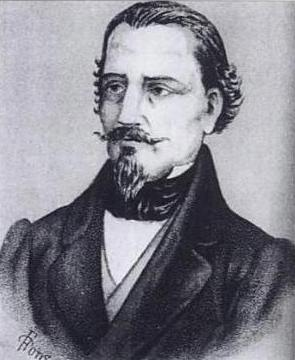Cayetano Ripoll, hanged for heresy
This account does not fit within the parameters of my study of heresy in Britain and Ireland. I include it nonetheless as a salutary example of what has been done by Christians who were convinced of their own righteousness.
===========
Cayetano Ripoll (1778-1826) was a schoolmaster, a soldier in the Spanish Peninsular War, a Deist and very unfortunate: he was the last person to be killed by the Spanish Inquisition. (Wiki has a fuller account.)
The Inquisition had been suppressed in Spain in 1808. It was reconstituted under King Fernando VII in 1814 and the following year it issued an edict condemning modern rationalist philosophy and calling on all faithful Catholics to denounce anyone who adhered to such teaching, as well as Jews, Muslims and Protestants.
Ripoll, when a soldier, had been captured by French forces and imprisoned. Whilst there he declared himself to be a Deist.
On his return to Valencia in 1824, Ripoll became a schoolteacher. He was subsequently arrested and accused of disbelieving core Christian doctrines: in Jesus Christ, the Trinity, the Gospels, the infallibility of the Catholic Church. He did not attend Mass and was corrupting his pupils by teaching them that to observe the ten commandments was all that was necessary to live a Christian life.
After two years in prison he continued to refuse to recant and was condemned to death by burning at the stake for his contumacy.
Ripopll's sentence was commuted to hanging, apparently on the order of the King, and his death was dramatised and proclaimed as a declaration of the reach and power of church and state, and a warning to any like-minded person.
The Times gave an account of events:
At 11 o'clock on Monday, the 31st ult., he was taken from prison, and made to march quick time behind a cart to the gallows; on the cart was placed an empty cask, painted with flames, devils &c., which cask served him afterwards for a coffin, in which he was buried outside the churchyard.
The churches by which he passed on his way to the gallows were all closed, and the saints stuck up in the streets, covered with black; the crosses were taken down from the gallows; in short, everything belonging to religion was put aside. (The Times August 26, 1826, p. 2 Issue 13054; col E)
The symbolism was more than Ripoll's personal perdition. It was a proclamation of terror to all who saw or heard about it. This is the paralysing open secret which everyone knows and no-one can say. The covered saints were not only turning their holy gaze from the condemned man and his heresy, they were showing and demanding a visible blindness.

Comments
Post a Comment
Comments and corrections are welcome. But please note that the focus is on the historical examination of heresy cases, not the rights and wrongs of the theology..